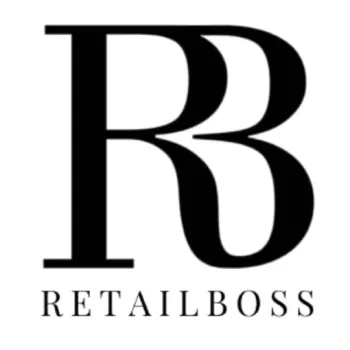Visual merchandising is a crucial aspect of retail that involves the presentation and display of products in a store to attract customers and drive sales. Effective visual merchandising can help create a unique brand identity and enhance the overall shopping experience for customers. There are several types of visual merchandising, each with its unique purpose and impact on the customer experience. Some of the key types include:
1. Window Displays: These are eye-catching displays placed in store windows to capture the attention of passersby and entice them to enter the store. Window displays often showcase new or popular products, seasonal items, or promotional offers. The art of creating visually appealing window displays has been honed by retailers for many years, as they know that a well-designed display can make all the difference in attracting potential customers.
In fact, some retailers invest significant time and resources into designing elaborate window displays that incorporate intricate lighting, props, and even sound effects to create an immersive experience for shoppers. Window displays are particularly effective during the holiday season when retailers go all out with festive decorations and themes. However, creating a successful window display requires more than just aesthetic appeal; it should also be relevant to the store’s brand and target audience. A good window display not only draws people in but also reinforces the store’s message and values.
2. Interior Displays: These are product displays arranged inside the store, which can include various types of fixtures, shelves, and decor elements. The goal of interior displays is to create an appealing and organized shopping environment that encourages customers to explore and make purchases. Interior displays can also serve as a way to showcase new or seasonal products, highlight sales or promotions, and reinforce the brand’s image and messaging.
If you strategically place products and using eye-catching visuals, you can draw attention to specific items and influence customer behavior. Additionally, well-designed interior displays can improve traffic flow and create a comfortable and enjoyable shopping experience for customers. With the right combination of fixtures, lighting, and decor elements, retailers can create a unique and memorable atmosphere that sets them apart from competitors.
3. Store Layout: The layout of a store plays a significant role in visual merchandising. It involves the strategic placement of products, aisles, points of sale, and dressing rooms to create a smooth flow for customers and encourage them to browse through different sections of the store. The layout of a store can also impact the overall shopping experience for customers. For example, if products are placed too closely together or the aisles are too narrow, customers may feel overwhelmed and frustrated.
On the other hand, a well-planned store layout can create a comfortable and enjoyable shopping environment that encourages customers to stay longer and make more purchases. Additionally, a good store layout takes into account the target audience and their shopping habits, making it easier for them to find what they need and increasing the chances of repeat visits.
4. Seasonal Displays: These are temporary displays created to highlight specific products or promotions during particular seasons or holidays. Seasonal displays help create a festive atmosphere and encourage customers to make timely purchases. In addition to boosting sales, seasonal displays can also serve as a way to build brand recognition and customer loyalty. For example, a grocery store might create a Halloween-themed display that features not only candy and snacks, but also branded merchandise like reusable shopping bags or coffee mugs. By associating their brand with a fun and festive holiday, the store can help customers feel more connected to the brand and more likely to return in the future.
For example, a clothing retailer might create a winter wonderland-themed display that showcases its latest winter apparel while also creating an immersive shopping experience for customers. With the right design and execution, seasonal displays can be a powerful tool for driving sales and building brand loyalty.
5. Point of Purchase (POP) Displays: POP displays are strategically placed near checkout counters or other high-traffic areas to promote impulse purchases. They often feature small, affordable items or promotional offers that customers can easily add to their shopping carts. The effectiveness of POP displays can be attributed to their ability to capture customers’ attention at the point of purchase. They are designed to stand out from the surrounding merchandise and draw in customers with eye-catching graphics and clever messaging.
In fact, studies have shown that well-executed POP displays can increase sales by as much as 20%. Retailers often use seasonal or holiday-themed displays to create a sense of urgency and encourage shoppers to act quickly. Additionally, some companies use interactive displays that allow customers to engage with the product before making a purchase. Overall, POP displays are an effective way for retailers to boost sales and drive revenue.
6. Outdoor Signage: Exterior signs play a vital role in attracting customers to a store by communicating the store’s identity and setting the tone for the shopping experience. Effective outdoor signage should be visually appealing, easy to read, and consistent with the store’s branding. It’s important to consider the placement of outdoor signage as well. Signs should be strategically placed to maximize visibility and reach the target audience.
For example, a sign placed on a busy street corner will likely attract more attention than one placed on a quiet side street. Additionally, the size and shape of the sign should be tailored to its location. A large billboard may be appropriate for a highway, while a smaller sign may be more suitable for a storefront window. Overall, a well-designed and strategically placed outdoor sign can be a powerful tool in attracting customers and building a brand.
7. Themed Displays: Themed displays revolve around a specific concept, storyline, or product collection, helping to differentiate and highlight certain products or features. Themes can be as simple as coordinating colors or as elaborate as a fictional narrative or customer testimonial. When creating a themed display, it’s important to consider the target audience and what would resonate with them.
For example, a children’s clothing store could use a theme centered around a popular cartoon character or animal, while a high-end fashion boutique may opt for a more sophisticated and elegant theme.
8. Product Grouping: This technique involves displaying related products together to show customers how they might use multiple items in conjunction. Product grouping can inspire customers to make additional purchases and help them visualize the products in their own lives. For example, a clothing retailer might display a mannequin wearing a complete outfit, including a shirt, pants, and shoes.
This not only shows customers how the items look together but also encourages them to purchase the whole outfit rather than just one piece. Another example is a home goods store grouping together furniture, rugs, and decor to create a cohesive and stylish living room display.
If you show customers how the products work together, they can better envision the products in their own homes and be more likely to make a purchase. The key to effective product grouping is to make the displays visually appealing and easy to understand.
9. Technology Integration: Incorporating technology, such as digital displays and interactive installations, can enhance customer engagement and create a more immersive shopping experience.
For example, digital displays can be used to showcase products in a visually appealing way, while interactive installations can allow customers to explore and interact with products in a hands-on manner. This technology can be used to streamline the checkout process, making it faster and more convenient for customers.
10. Store Environment: The overall atmosphere of a store, including lighting, music, and scent, contributes to the visual merchandising strategy. A well-designed store environment can create a specific mood or tone that aligns with the brand’s image and appeals to the target audience. For example, a luxury fashion brand may opt for dim lighting, classical music, and a faint scent of leather to create an exclusive and sophisticated atmosphere. On the other hand, a trendy clothing store aimed at young adults may use bright lighting, upbeat music, and a fruity scent to convey a lively and energetic vibe.
The store environment can also influence buying behavior, as customers are more likely to spend time and money in a store that is aesthetically pleasing and comfortable to be in. In addition, a well-designed store environment can help to differentiate the brand from competitors and build customer loyalty. Overall, creating a cohesive and appealing store environment is a crucial aspect of visual merchandising that should not be overlooked.

















